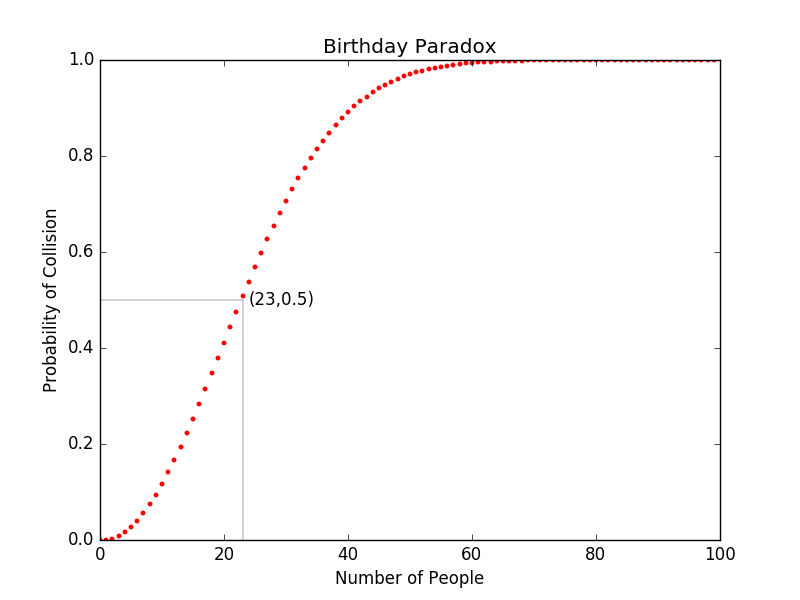The Birthday Problem is concerned with computing the probability that, in a set of $n$ randomly chosen people, at least one pair of people will have the same birthday (let’s call it a ‘collision’).
Intuitively, what would be your guess for the probability of collision to become > 0.5? Given that there are 365 possible days, I would imagine $n$ to be quiet large for this to happen. Let’s compute it by hand.
What is the probability that there isn’t a collision?
- The total number of combinations of birthdays possible for the set of $n$ people is $365^n$.
-
However, for the birthdays to not overlap, each one should pick $n$ different birthdays out of the 365 possible ones. This is equal to $_{365}P_{n}$ (pick any $n$ out of the 365 days, and allow permutations).
-
$P(\text{no collision}) = \frac{_{365}P_{n}}{365^n}$.
- $P(\text{collision}) = 1 - \frac{_{365}P_{n}}{365^n}$.
Plotting the graph for collision to happen, let’s see where this becomes true.

So it seems that the collision happens with a probability >= 0.5 after $n$ is greater than 23. The paradox in the Birthday Paradox is that we expect $n$ to be quite large, where as it seems you need only $\approx \sqrt{365}$ people.
In general, it has been proven that the if there are $n$ balls, and $b$ bins, then the probability of any bin having > 1 ball is >= 0.5, when $n \approx \sqrt{b}$.
Considering hash functions to be placing balls in bins, if the number of distinct elements that could be fed to the hash function are $n$, to ensure that the probability of collision remains < 0.5, the length of the hash in number of bits required for the hash function, $l$, should be such that $2^l > n^2$.
This means, if you expect $2^{32}$ distinct elements, make sure to use at least a 64 bit hash, if you want the probability of collision to be < 0.5